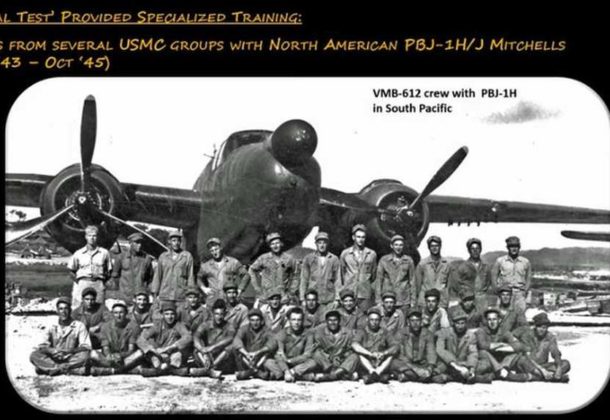Naval Aviation in Wartime Pax River

A lot more than naval aviation was going on around Southern Maryland during World War II. Bob Tourville of the Pax River Naval Air Museum has photos and footage to prove it.
There was, of course, naval aviation at the brand-new Naval Air Station Patuxent River, commissioned within the opening months of the United States’ entrance into World War II. The testing of aircraft and weapons continues.
There was also a transport fleet, with some very special duties. Including TACOMO, which was left behind when the rest of the fleet left.
Gunnery training took place here, too. A lot of it. To the point that a gunnery ship was stationed in the Chesapeake Bay. So was a carrier, to allow the test pilots to test.
And there were flying boats, which took a special talent, that only one or two folks had until they had a month to train a lot more flying boat pilots. Pax River built three flying boat basins, still visible on maps of the Pax River base.
And there were drones, back then, during World War II. Webster Field, south of Pax River in St. Inigoes, MD, picked right back up with unmanned aircraft this century.
Peter LaPorte, executive director of St. Mary’s County Historical Society, bookends this second installment in the Historically Speaking series, discussing with Mr. Tourville his research methods. The video contains vintage photos and footage from a much larger array of World War II activities in Southern Maryland than most people know about, Mr. Tourville says.
Sure the jet engine was invented and tested here, but so was gun sighting and bomb sighting equipment. In Piney Point, the very torpedoes heading into the war were first tested — without ammunition — to make sure they were correctly calibrated. Blimps stationed out of Solomons Island retrieved them. If the torpedoes went straight, they headed to war; if they didn’t, they returned to Alexandria, VA, for adjustment.
All of this was happening, Mr. Tourville explains, in “time frames that would be miraculous by today’s standards.”
Bob Tourville worked 35 years as an engineer with the Naval Air Systems Command and has been a student of military aviation history for longer than that. He now volunteers with the Patuxent River Naval Aviation Museum, helping with design and interpretation and more recently branching out into research. The film below is one of the products of his work.
The Historical Society is the repository of a unique collection of Maryland memorabilia and museum pieces displayed on the first floor of Tudor Hall and in the Old Jail Museum at 41625 Courthouse Drive in historic Leonardtown. The 18th-century Tudor Hall also serves as headquarters of the society and houses the Historical Society’s Research Center.
To learn more about the St. Mary’s Historical Society, visit its Leader member page.
Historically Speaking is a collaboration with the Patuxent River Naval Air Museum and supported by grants from the Maryland Heritage Areas Authority and the Southern Maryland Heritage Area.






















